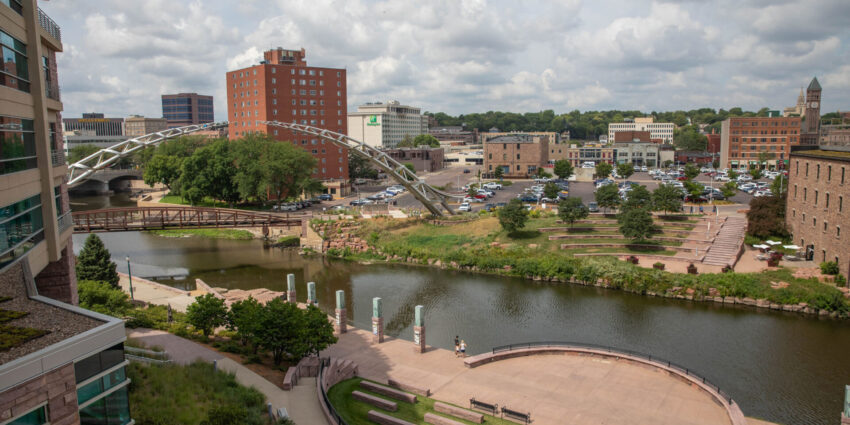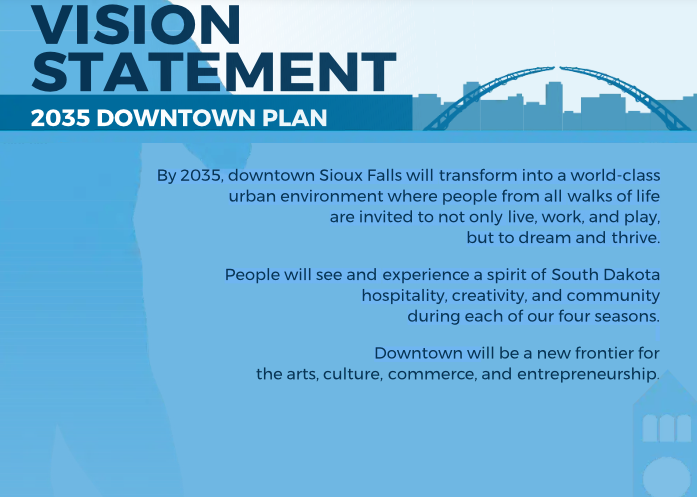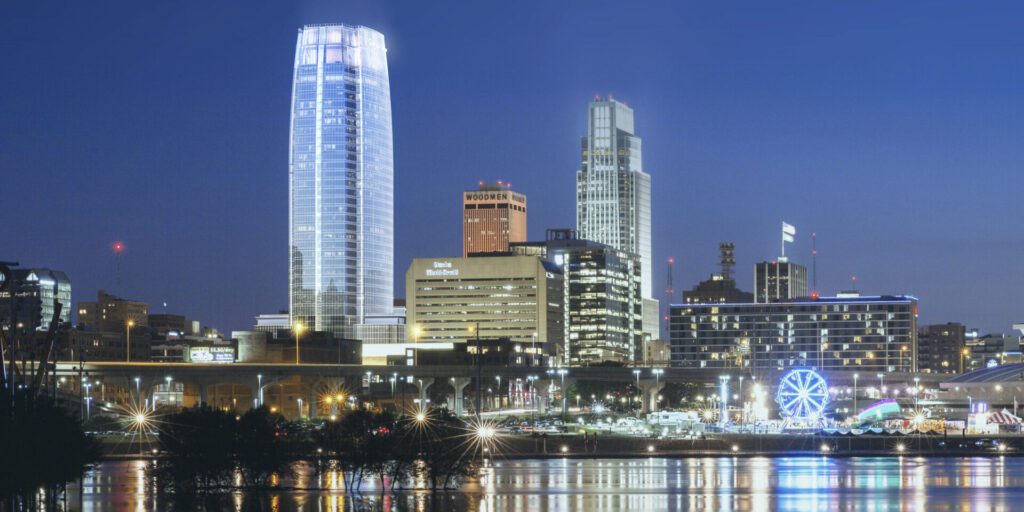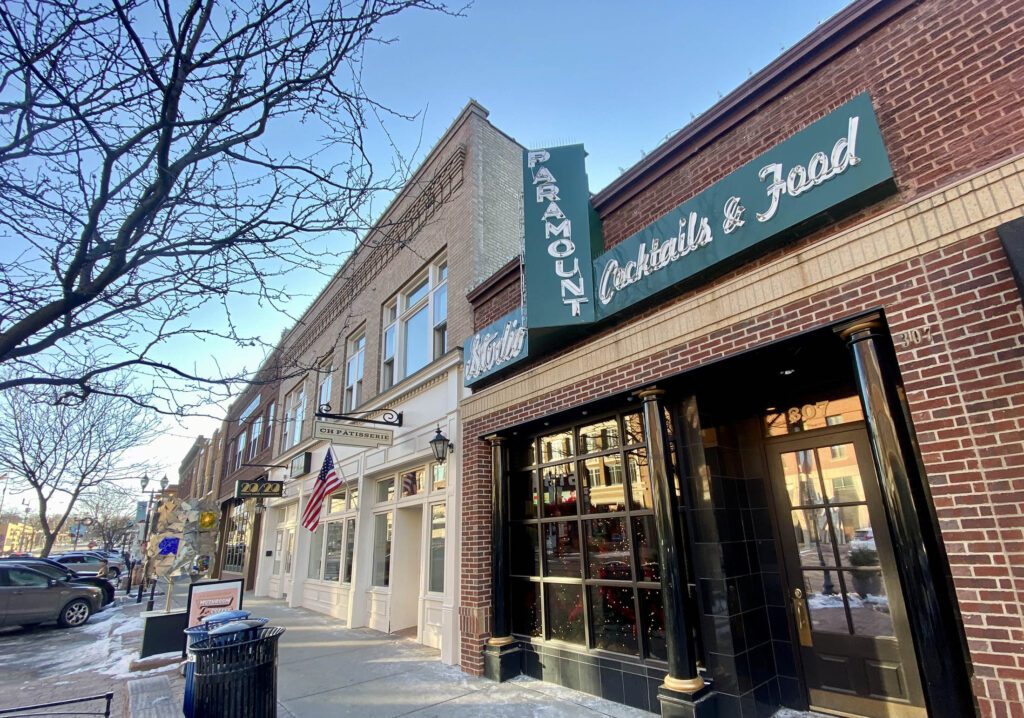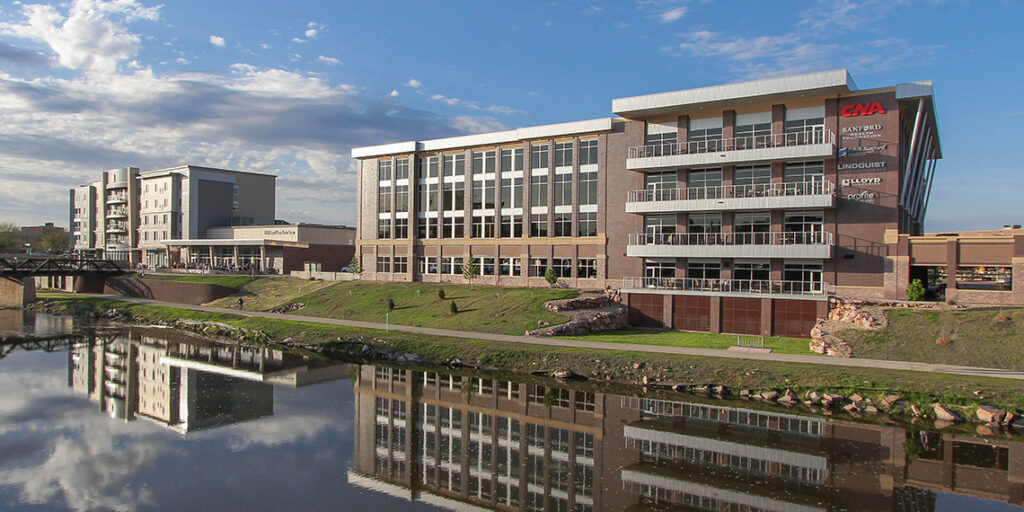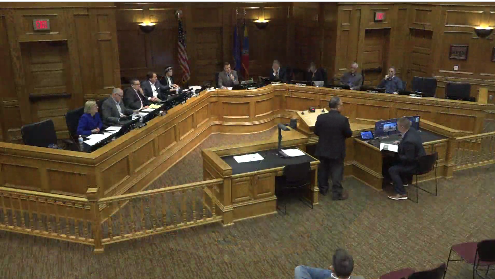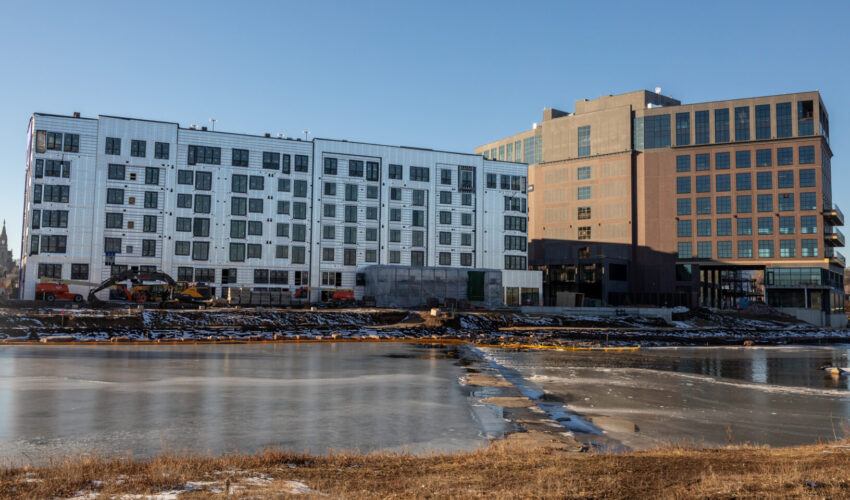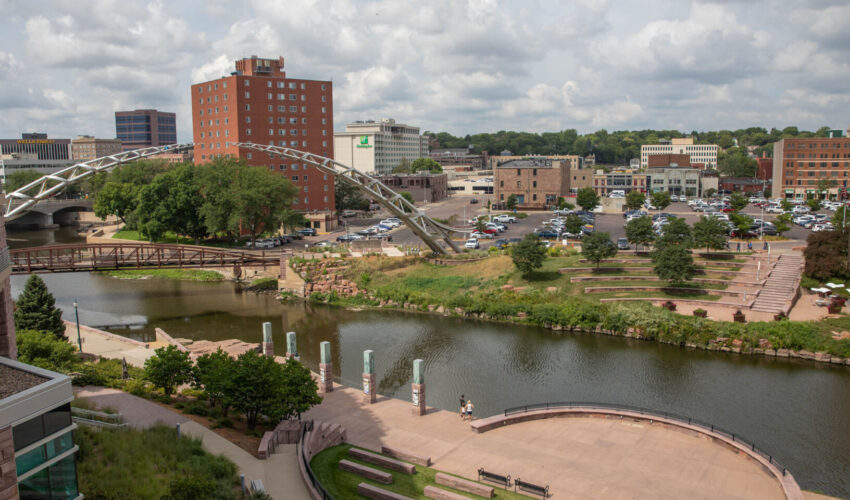Jodi’s Journal: Downtown 2035’s Goldilocks goal
Aug. 6, 2023
After reading – or at least skimming – all 200-some pages of the draft Downtown 2035 plan, here’s my overriding thought:
Somehow, it manages to think both too big and not big enough.
In between, there’s a lot of good background, plus many worthy ideas and tactics to move downtown forward. But, as this is still a draft and there’s an event this week to give further input, I figured it was worth a deeper dive.
Now keep in mind, in my world, words matter. So when I see verbiage in the vision statement like “a world-class urban environment” or “a new frontier for the arts, culture, commerce and entrepreneurship,” I naturally recoil a bit.
What exactly does that mean? I understand it’s called vision for a reason, but it still should be objective enough to be at least somewhat measurable.
And, let’s be candid: I’m as much a cheerleader for downtown as anyone, but can we realistically say we’ve even achieved regional superiority at this point? Is it really the time to aim for a “world-class urban environment?”
The last plan, which looked out to 2025, aimed to make downtown Sioux Falls “one of the most livable, prosperous and vital central business districts of any Midwest American city.”
This is not to take away in any way from the historic development that has occurred in our downtown in recent years. Between Cherapa Place and The Steel District alone, about a half-billion in investment is being made, not to mention all the other surrounding public improvements and individual business investments in the past decade.
But some context is appropriate too.
In downtown Omaha, for instance, Mutual of Omaha, a Fortune 300 insurance company, is building a 44-story building that will be the tallest in the region, valued at $433 million and expected to be done in 2026.
A 72-acre parks improvement plan is underway, valued at $325 million, to add a sculpture garden, skate ribbon, “urban beach,” destination playgrounds and the Kiewit Luminarium, a multimillion-dollar interactive STEM museum for families that opened in April. And on top of all that, a $300 million investment in a new downtown streetcar line is set to be done in three years.
In downtown Des Moines, at least $3 billion has been invested in the past decade, and plans for a soccer stadium continue to inch forward despite delays and increased costs.
In downtown Fargo, a 400-seat community theater is expected to break ground this fall, and a nearby vacant building is being renovated into a hotel.
At least, that’s a snapshot of what my quick search revealed.
In short, downtown development is no longer a differentiator. People expect walkable cities, public art, entertainment venues and independent retail in any downtown of significance.
The reality is no master plan I’ve seen has ever been the source of great innovation or big ideas. They’re much more a reflection of community input, existing efforts and comparative endeavors. Many other cities have an indoor market? Sioux Falls should have an indoor market. You get the idea.
That’s not to discount the value of such plans because there’s definitely value — especially for those coming into the city without a lot of knowledge and looking for a sense of the community and its priorities, and for those in public office seeking to define or justify uses for public dollars.
So with that in mind, how about these for additional goals:
Big picture
Put a dollar figure on the plan. I’m not sure that has ever been done here, but why not quantify the scale of vision we’re embracing? I think it’s realistic to project there will be at least $1 billion in new public investment or public-private partnerships downtown in the next decade. A stretch goal could be higher. That also would show political will in the community to make the large investments it will take in infrastructure, for instance, or quality-of-life projects such as improvements to Falls Park and continued River Greenway development.
Retail
As the Downtown 2035 plan says: “A downtown retail district, if done correctly and complemented by a mix of experience-friendly amenities and touches, is a particularly promising environment for overcoming retail competitive weaknesses against both online vendors and suburban big-box stores. The look and feel of a historic downtown is truly an experience that cannot be replicated by online shopping or even by expensively crafted new suburban retail environments.”
It goes on to note that “the main retail and dining portion of Phillips Avenue, from roughly Ninth to 13th streets, is already a good case study in how to nurture – or at least not mess up – a desirable downtown retail environment. That stretch of downtown Sioux Falls, already endowed with excellent “bones” in the form of historic buildings and a pleasing, human-scale relationship between its streets, sidewalks and largely two- to four-story storefronts, has been well supported by public infrastructure investment and planning.”
But how do we keep it that way? The 2035 plan does not speak to how adjusted zoning or special-use cases might preserve street-level commercial space for retailers. As a business, I understand why banks, professional services firms and the like want to lease space in these areas of high foot traffic, and I understand why they’re desirable leases for building owners. But with my community hat on, it seems to make sense to look at how we guide commercial growth in a way that benefits the broader downtown.
Office
One of the biggest stories of last week for SiouxFalls.Business announced a new office lease for Midco, which will bring about 50 members of its corporate team to a new downtown office next year and have the capacity to get to about 80. Contrast that with stories I continue to see from other downtowns, where the exodus of office workers has caused a cascading effect for retail and residential demand, and you realize we’re in a strong position.
The Downtown 2035 plan speaks to trying to attract downtown’s first Fortune 500 company, which I didn’t exactly understand because we already have offices for Fortune 500 companies, so I’ll assume it means a corporate or regional headquarters. But, again, here’s the Goldilocks problem of thinking both too big and not big enough: First, I think it’s increasingly rare for any company that size to move a headquarters, especially one to such a far-flung location, relatively speaking. There are 16 of them located in the state of Minnesota, so I suppose there’s a universe of possibility, but it’s a small one.
The bigger consideration in the office sector is attracting companies that have office-centric hybrid work policies. The more days workers work from the office, the better for the greater downtown. At Midco, for instance, workers will be required to be there at least three days a week. That makes a huge difference for the retailers and restaurants that depend on all-day traffic and not just after-hours.
Residential
The Downtown 2035 plan aims to add 250 housing units on average per year, which seems like an appropriate goal given the momentum and interest in living here. I easily can count to that many housing units in the next few years just with projects already announced.
I think it’s also key to acknowledge that new housing anywhere comes with a cost. And I understand it’s not maybe politically correct to say, but I don’t think there’s anything particularly wrong with downtown housing being aspirational if that’s what the market demands. We need people living in the downtown area with the disposable income to support the surrounding businesses. Because these residents and workers shop and eat there during the week or during the day, the businesses are able to sustain so that people from outside downtown are able to patronize them the rest of the time.
The place for incentivized residential redevelopment is in neighborhoods adjacent to downtown, where residents enjoy the benefit of being able to walk or bike downtown and where the city collectively benefits from enhanced core neighborhoods. The Downtown 2035 plan contemplates a downtown boundary extension to the north and east, which is worth examining, but beyond that, looking at ways to support additional residential opportunities in the All Saints, Cathedral/North End, Pettigrew Heights and Whittier neighborhoods is key too.
To give input
I downloaded the draft Downtown 2035 plan into a PDF so you can see it here: Horizon 2035 Downtown Sioux Falls Plan.
The open house to give feedback is from 4 to 7 p.m. Thursday, Aug. 10, with a drop-in event at the Downtown Library. You also can submit comments online.
Plans like this are only as strong as the input given and the resulting community buy-in. It will help if the final product strikes a balance between aiming high while setting appropriate targets that we’re capable of hitting.

